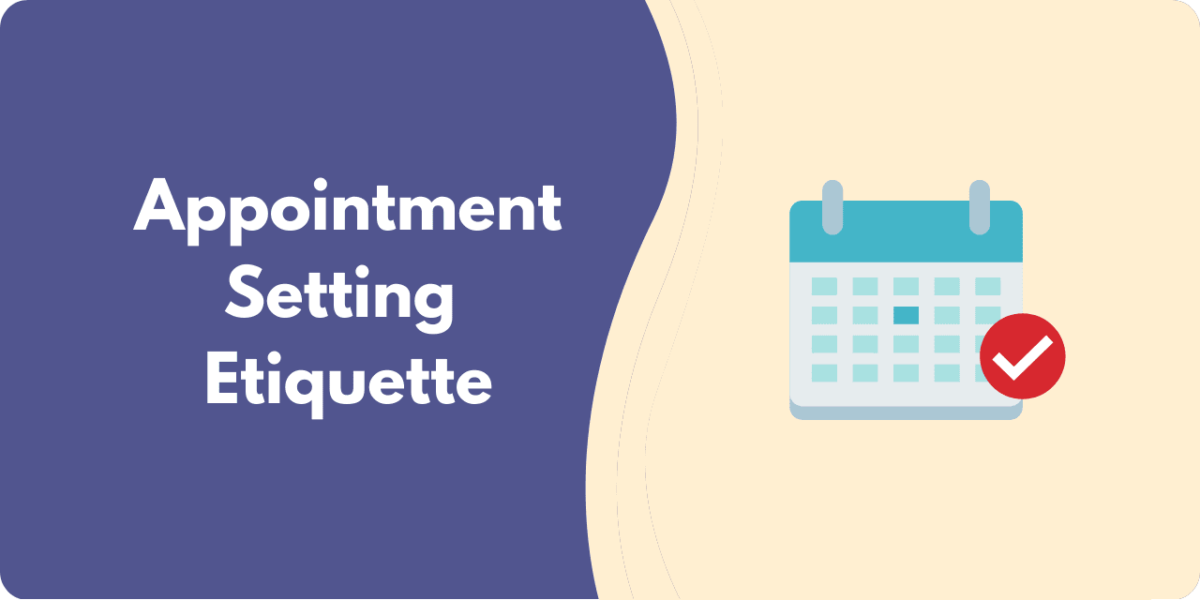Setting appointments is an important part of many business processes, such as cold calling in sales. Although the process has changed as businesses adopted more advanced technology and streamlined operations, the foundation of appointment-setting etiquette remains roughly the same.
However, there is no comprehensive guide on how to write a good email or what to say on a call when you’re setting an appointment. Hopefully, by the end of this article, you will learn the right approach, what to say, and how to say it
Step 1: Do Your Research
Do ample research about the individual, company, or organization. People take pride in what they do, and being thoroughly informed will tell them you’re not only interested but also appreciate their work.
Taking the time to get to know a company before sending an email will also give you an opportunity to evaluate if they’re the right fit for you.
Another crucial piece of information you should look up is the right person to contact. The last thing you want is for your email to end up unread because you sent it to the wrong person.
Who is the decision-maker in this company? Who is likely going to respond? Who can point you in the right direction? These are the things you want to answer before even composing your email message.
Step 2: Mind the Time Zone
Now that you know where to send your email or whom to call, it’s time to learn their local time zones. This is a step on its own because it is often overlooked. If you want a higher chance of getting a response, reach out to them when they are most likely able to respond to you.
Getting a call at three in the morning from someone who doesn’t know where you’re currently based is an inconvenience, at the very least.
Step 3: Use Straightforward Tools
Using technology is always a great way to streamline different processes, but it shouldn’t be complicated. You can use an appointment scheduling software for small business to manage all kinds of appointments. By using such technology, you can easily see your available schedule options.
You also want something that has a reminder functionality. Doing the follow-up yourself adds a human touch to it, but if you have a packed schedule, it’s easy for such things to slip your mind.
Step 4: Introduce Yourself
We all know how to introduce ourselves. But do you do it when setting an appointment? You want to tell them enough about yourself so that it will be clearer why you’re reaching out. However, remember to leave enough information to yourself so you can talk about it when you meet.
One good way to do this is to provide a brief overview of your company.
Step 5: State Your Case Well
Express outright why they should agree to have a meeting with you. Lay out the purpose and the agenda. Give an overview of how a meeting can be mutually beneficial should you proceed to work together. Providing these details will give you a higher chance of getting a favorable response. This can also serve as a guide, so you don’t leave out anything important.
Step 6: Offer Multiple Options
You are reaching out to very busy people, just like you. It’s best to offer two to three schedule options that work for you. This will save you a lot of time going back and forth, trying to figure out the best day and time to meet.
It’s important to note that even two to three options might not be enough in some instances. You have to be ready how to respond.
Step 7: Confirm Your Appointment
Once you have agreed on the time and location, it’s time to send a confirmation message. This message ensures that all parties are on the same page. You don’t want to miss an important meeting with a potential customer or an opportunity to close a major contract; even the tiniest details can cause a disaster. There are also tools that automate the confirmation of appointments, so be sure to check those out.
Bonus: Gathering Information Before Appointments
Before writing your email or making the call, you should gather the following information:
- What do you know about their company or organization?
- What do you particularly like about what they do?
- What made you reach out to them?
- How can you help?
- How can they reach out to you?
The Bottom Line
Setting an appointment can be tricky, but it’s a necessary process for many organizations. With these steps and a confident but humble tone, you’ll breeze through it easily.
Further reading: discover our section on etiquette here.

